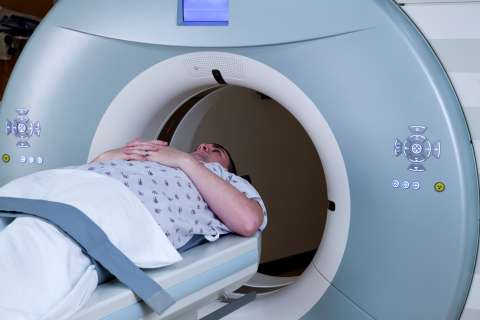You are what you eat, according to the adage. But it’s not just the body that’s impacted. According to research from UCLA David Geffen School of Medicine, living in a disadvantaged neighborhood can affect food choices, weight gain and even the microstructure of the brain.
The study, appearing in Communications Medicine, a Nature journal, finds poor quality of available foods, increased intake of calories from foods high in trans-fatty acids, and environments that do not foster physical activity, all prevalent in disadvantaged neighborhoods, disrupt the flexibility of information processing in the brain that is involved in reward, emotion regulation, and cognition.
Previous research showed that living in a disadvantaged neighborhood can impact brain health, but in this study, researchers did a detailed analysis of the brain’s cortex to determine how living in a disadvantaged area can change specific areas of the brain that play different roles.
“We found that neighborhood disadvantage was associated with differences in the fine structure of the cortex of the brain. Some of these differences were linked to higher body mass index and correlated with high intake of the trans-fatty acids found in fried fast food,” said Arpana Gupta, PhD, co-Director of the Goodman-Luskin Center and Director of the Neuroimaging Core.
“Our results suggest that regions of the brain involved in reward, emotion, and the acquisition of knowledge and understanding might be affected by aspects of neighborhood disadvantage that contribute to obesity,” said Gupta, senior author. “This highlights the importance of addressing dietary quality issues in disadvantaged neighborhoods to protect brain health.”
Neighborhood disadvantage is defined by a combination of such factors as low median income, low education level, crowding, and lack of complete plumbing. This study included 92 participants – 27 men and 65 women – from the greater Los Angeles area. Demographic and body mass index information was collected, and neighborhood disadvantage was assessed as to its area deprivation index (ADI) using University of Wisconsin School of Medicine’s Public Health’s Neighborhood Atlas.
Earlier studies have found that people living in disadvantaged neighborhoods are at higher risk of obesity due to the poor quality of available foods, increased intake of calories from foods high in trans-fatty acids, and environments that do not foster physical activity.
In this study, researchers focused on the relationship between ADI and neuroimaging results at four levels of the brain cortex to investigate in more refined detail the connections between neighborhood disadvantage and brain structure. Participants underwent two types of MRI scans that, when analyzed in combination, provide insights into brain structure, signaling and function.
“Different populations of cells exist in different layers of the cortex, where there are different signaling mechanisms and information-processing functions,” said Lisa Kilpatrick, PhD, a researcher in the Goodman-Luskin Microbiome Center focusing on brain signatures related to brain-body dysregulation, the study’s first author. “Examining the microstructure at different cortical levels provides a better understanding of alterations in cell populations, processes and communication routes that may be affected by living in a disadvantaged neighborhood.”
According to the results, worse ADI ratings were associated with communication changes in brain regions that are important for social interaction. Other changes occurred in regions involved in reward, emotion regulation, and higher cognitive processes – and these changes appeared to be affected by trans-fatty acid intake. Together, the findings suggest that factors prevalent in disadvantaged neighborhoods that encourage poor diet and unhealthy weight gain “disrupt the flexibility of information processing involved in reward, emotion regulation, and cognition.”
Authors Gupta and Kilpatrick are both corresponding authors. Other authors, all from UCLA, include Keying Zhang, Tien Dong, Gilbert Gee, Hiram Beltran-Sanchez, May Wang, Jennifer Labus, Bruce Naliboff and Emeran Mayer.
Funding This research was supported by grants from the National Institutes of Health, including R01 MD015904 (AG), K23 DK106528 (AG), R03 DK121025 (AG), T32 DK07180 (TD), ULTR001881/DK041301 (UCLA CURE/CTSI Pilot and Feasibility Study (AG), R01 DK048351 (EAM), P30 DK041301; and pilot funds provided for brain scanning by the Ahmanson-Lovelace Brain Mapping Center. These funders played no role in study design, or the collection, analysis, and interpretation of the data.
Competing interests Gupta is a scientific consultant to Yamaha. The remaining authors declare no competing interests.
Article Communications Medicine: “Mediation of the association between disadvantaged neighborhoods and cortical microstructure by body mass index.” DOI 10.1038/s43856-023-00350-5.




